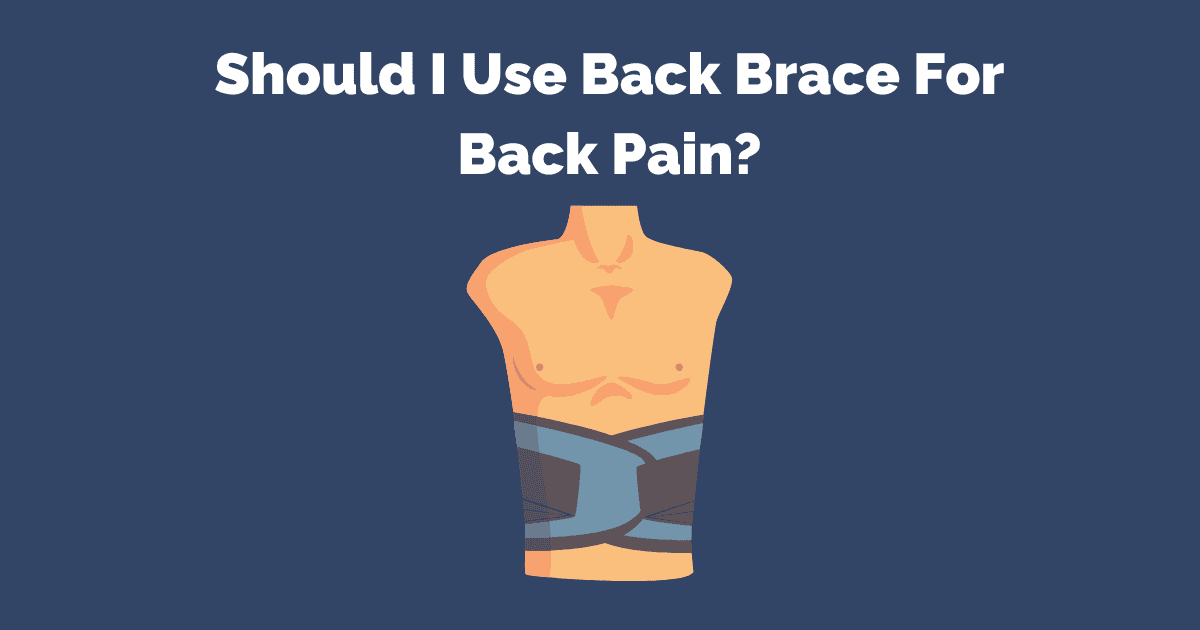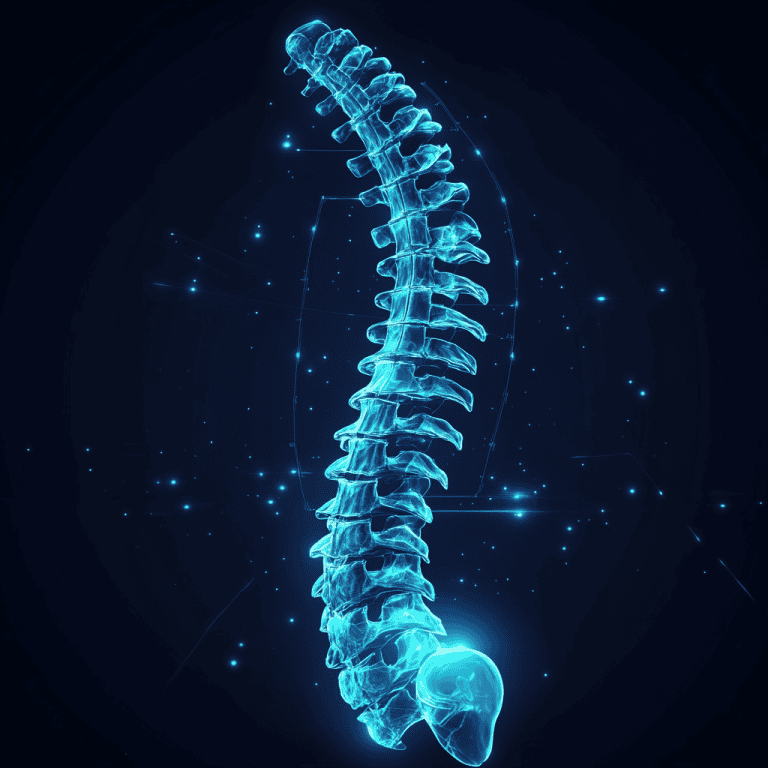Should I Use a Back Brace for Back Pain?
You’re here because you’re wondering whether a back brace can help with your back pain. This question comes up often in my clinic, and just this past week, three different clients asked me the same thing.
So… here we are! If you’re dealing with back pain right now and you want to find out correct back brace for back pain. I hope this post gives you the clarity you need.
Before we dive in, a quick self-plug: If you’re looking for strengthening exercises and strategies to relieve back pain, I’ve published a book on Amazon called The Low Back Pain Free Program: A Step-by-Step Guide to Achieve a Lifetime Free of Lower Back Pain—check it out!
What You’ll Learn in This Blog Post
In this article, we’ll cover:
✅ What a back brace is used for
✅ When a back brace might be beneficial for pain relief and prevention
✅ The different types of back braces and how they function
✅ How long you should wear a back brace
✅ Conditions that may (or may not) benefit from a back brace
By the end, you’ll have a clear understanding of whether a back brace is right for you—and if it is, how to use it effectively.
Alright, let’s get started!
What Is a Back Brace For?
A back brace is a wearable orthotic device designed to provide stability and support to the spinal joints. It helps limit excessive movement, particularly forward bending, which can contribute to lower back pain. This added stability can be beneficial for individuals dealing with:
✔ Heavy lifting jobs that put strain on the lower back
✔ Repetitive bending motions that cause fatigue and pain
✔ Recent musculoskeletal injuries in the lumbar spine
Many clients ask me, “Should I wear a back brace all the time during work?” or “Is it okay to wear one while sleeping?” These are great questions, and I’ll be addressing them in the later sections, so keep reading!
What Are the Benefits of Back Braces?
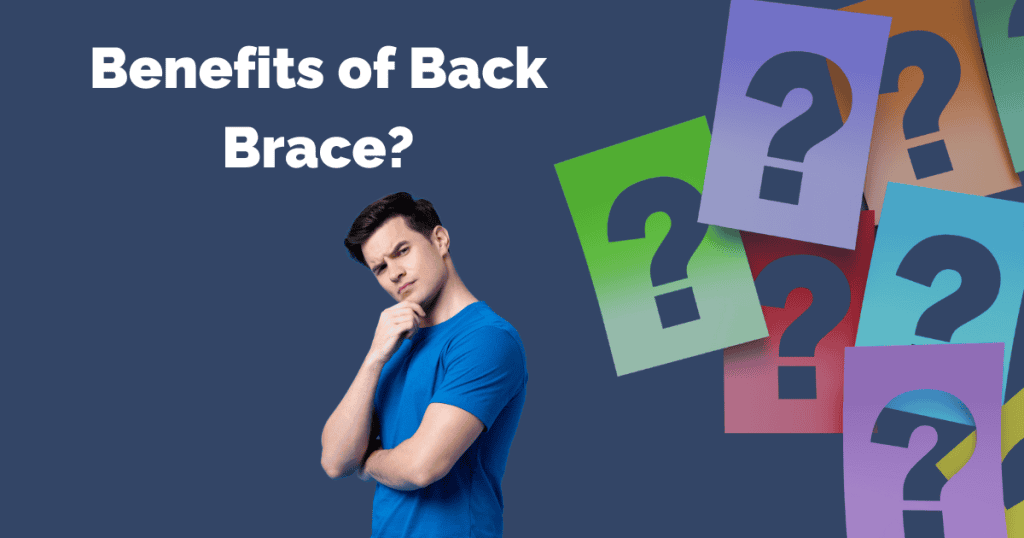
1. Support for Spinal Joints
One of the key benefits of using a back brace is the support it provides to spinal joints. Most back braces are designed to stabilize the lumbar spine and sacroiliac joints, helping to prevent excessive movement that can strain these areas. The added compression from a back brace creates a buttress effect, reinforcing the spinal column and reducing stress on the lower back.
Beyond external support, it’s important to train your body’s natural defense system with exercises like bird dogs, back bracing techniques, and glute bridges to strengthen your core and provide long-term stability.
2. Pain Alleviation
A back brace not only supports the spine but also helps alleviate pain in the lumbar spine and sacroiliac joints. By limiting movement in these areas, the brace acts as an extra layer of protection, reducing strain on the joints and preventing further aggravation of injuries.
3. Spinal Stabilization
One of the primary functions of a back brace is to stabilize the spine. By wrapping around the waist and increasing tension around the core, it reduces pressure on the lumbar spine when bending forward, sitting, or performing daily movements. This enhanced stability can be particularly beneficial for individuals recovering from injuries or those engaged in activities that put repetitive stress on the lower back.
What Are the Different Types of Back Braces?
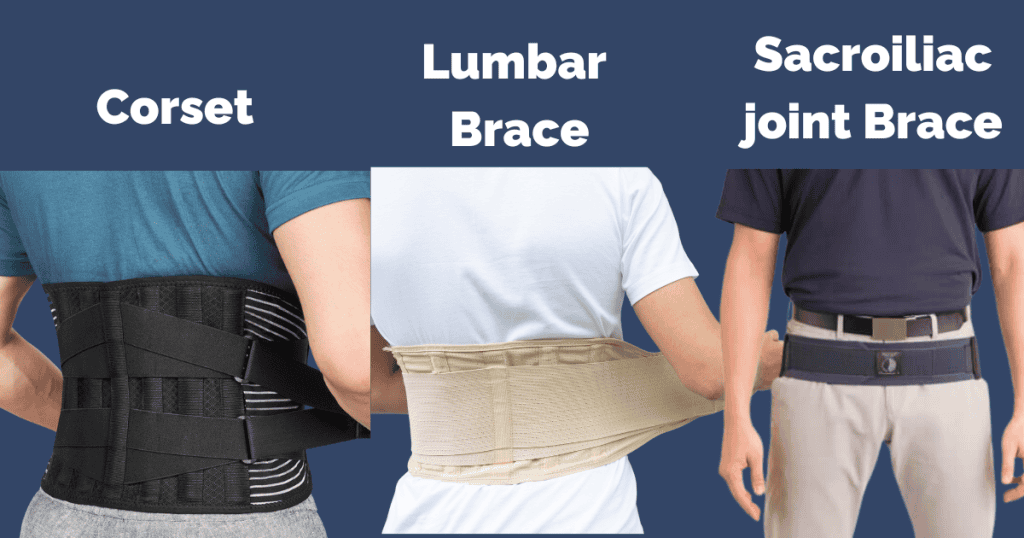
1. Corset Back Brace
A corset-style back brace is similar to a waist trainer but serves a medical purpose. It typically features a Velcro strap system that wraps around the mid-back and lumbar region, providing consistent pressure and support. Some brands use thin strap systems, but for optimal support, I recommend choosing one with a larger Velcro fastening area for even pressure distribution. While this type of brace can provide excellent support, some individuals find it uncomfortable for long-term wear due to the restriction it places on breathing and mobility.

FREETO Back Suppourt Belt
Designed for stability and comfort, this brace features a rigid plastic insert for extra lumbar support and adjustable elastic bands with Velcro for a secure, customizable fit. Perfect for daily wear, work, or workouts.
We earn affiliate commission at no cost to you
2. Lumbar Belt
A lumbar belt is designed to wrap around the lower back and sacral region. These belts come in various materials, including leather, Velcro, and elastic fabric. Some designs allow the straps to be pulled forward, while others pull to the side or back. From my experience, pulling the straps forward feels more natural and provides better comfort.
🔹 Best for: Lower back support, lifting heavy objects, and all-day wear.
🔹 Downsides: May not provide as much mid-back support as corset braces.
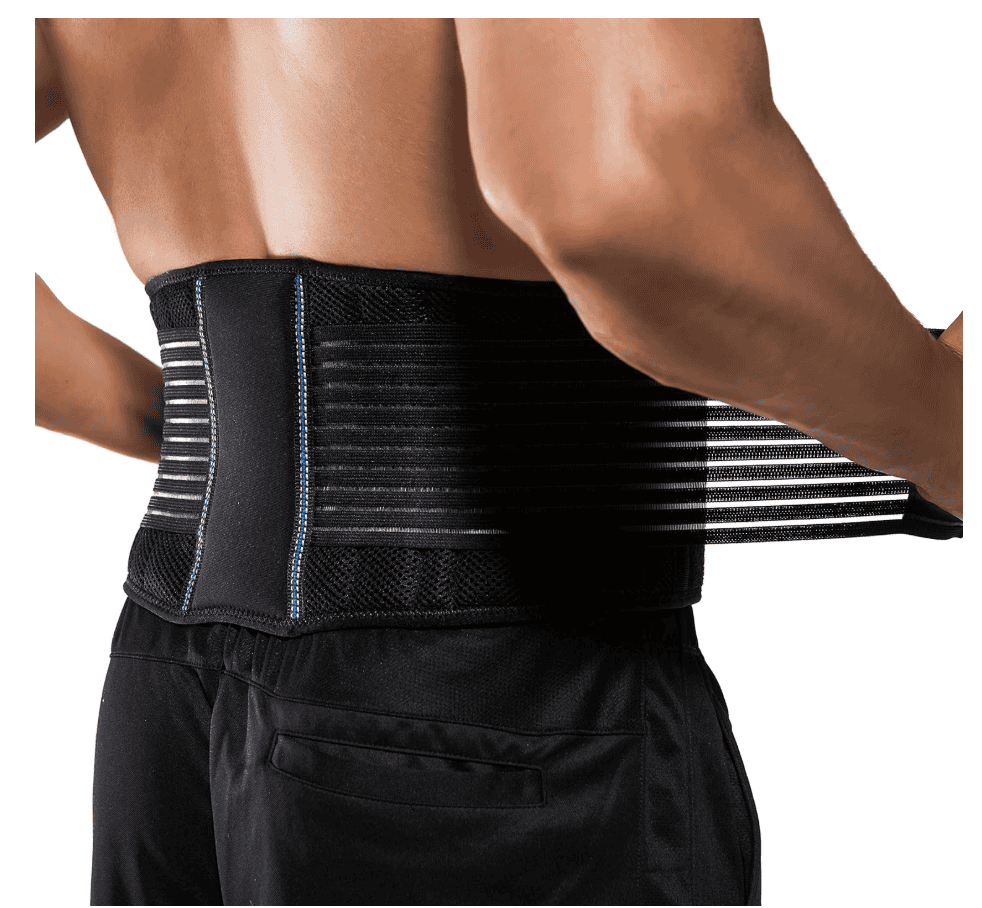
I picked this back brace because of its strong, wide Velcro straps that let you adjust for the perfect fit and stability. It sits comfortably on the lower back, giving you solid support without feeling bulky. If you’re looking for something reliable and easy to wear, this one’s a great choice!
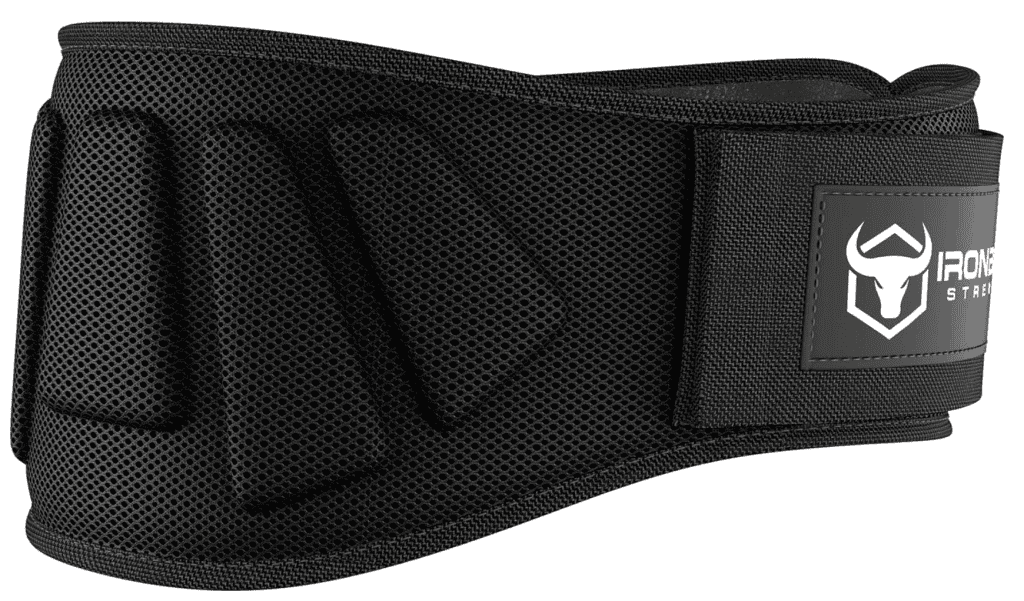
If you’re tired of stiff leather belts that take forever to break in, this one’s a game-changer. The durable fabric design feels comfortable from day one, while the Auto-Lock system and strong Velcro keep everything secure for max support during your lifts. Solid choice for any lifter!
3. Sacroiliac Joint (SI) Belt
A sacroiliac belt is a smaller, lightweight support brace designed to provide relief from SI joint pain and hip discomfort. It wraps around the sacrum and lower hip region, sitting lower than traditional lumbar braces. These belts are great for dull, achy pain near the tailbone and hip area.
🔹 Best for: Hip pain, SI joint dysfunction, and those who prefer lighter support.
🔹 Downsides: Provides limited lumbar support and may shift during movement.

Vriksasana Sacroiliac Hip Joint Belt
I’m picking this one because it has a soft fabric feel, Velcro reinforcement, and sits perfectly around the sacroiliac joint for solid support. Plus, it’s lightweight, so you get the stability you need without any extra bulk. Great for all-day wear!
Important Note:
While a sacroiliac belt offers light support, your body’s natural defense system (core muscles) should always be prioritized over wearing a brace all day. Strengthening exercises remain essential for long-term spinal health.
Should I Use a Rigid, Semi-Rigid, or Functional Back Brace?
1. Rigid Back Brace
Rigid back braces include hard plastic reinforcements on the front, back, or both sides, significantly limiting spinal movement. These braces are primarily used for post-operative healing after lumbar spine surgery and often have openings to allow airflow to surgical sites. Since they are typically custom-made, they are reserved for specific medical conditions requiring maximum immobilization.
2. Semi-Rigid Back Brace
A semi-rigid back brace offers less restriction than a fully rigid brace while still providing a level of stability. These braces use fewer stabilizing plastic pieces, making them a good alternative for later stages of post-surgical recovery or for individuals needing moderate lumbar support. Compared to rigid braces, they provide more comfort while still offering necessary reinforcement.
3. Functional Back Brace
A functional back brace is designed for daily use and is often worn during activities that require additional spinal support. These braces come in various materials, such as elastic, neoprene, canvas, plastic, or leather. I typically recommend an elastic back brace, which offers versatility and comfortably fits different body shapes. Functional braces are also commonly used in the gym for exercises like deadlifts and squats to improve spinal stability.
How Long Should I Wear a Back Brace?
The duration of wearing a back brace depends on the type of injury or condition you’re dealing with. Here are some general guidelines:
✔ Acute Injuries & Pain Relief: Wearing a back brace for the first 24 hours after an injury can help reduce pain and provide stability. If pain persists, wearing it for up to a few weeks may be beneficial, particularly when engaging in activities that might aggravate your condition.
✔ Post-Surgical Recovery: If you’ve undergone lumbar spine surgery, follow your surgeon’s specific instructions regarding brace usage. In most cases, post-surgical back braces are custom-fitted and should only be used as directed by your healthcare provider.
✔ Daily Activities & Prevention: If you’re using a back brace for support during work, exercise, or heavy lifting, wear it only when needed to avoid over-reliance, which could weaken your core muscles over time.
It’s important to strike a balance—while a back brace provides support, it should not be a long-term substitute for core strengthening and rehabilitation exercises. If you’re unsure how long to wear a brace for your specific condition, consult with a chiropractor, physiotherapist, or medical professional for personalized advice.
Conditions That Can Benefit from Back Braces
Back braces can be beneficial in various situations where additional spinal support is needed. While they provide relief and stability, it’s essential to understand that they should be used appropriately and under the guidance of a healthcare provider. In this section, we will cover five common scenarios where a back brace may be beneficial, though this list is not exhaustive. Always consult with your healthcare professional before using a back brace to ensure it’s the right solution for your specific needs.
Postoperative Healing
For patients who have undergone lumbar fusion surgery or other spinal procedures, a surgeon may recommend the use of a back brace. This serves as a reminder to limit movement, protecting the surgical site while the spine stabilizes. Since the healing process requires time, the use of a back brace can help provide support and controlled mobility, reducing strain on the healing area. Your healthcare provider will determine the appropriate brace type and duration of use based on your specific recovery needs.
Isthmic Spondylolisthesis
Isthmic spondylolisthesis is a fracture of the pars interarticularis, a key load-bearing structure of the spine. When recently diagnosed, immobilization is often required to support healing. A back brace can be recommended in this case to enhance stability at the fracture site, reducing excessive motion and promoting proper recovery. Your healthcare provider will guide you on the most appropriate brace type and duration of wear to optimize healing.
Vertebral Compression Fracture
A compression fracture occurs when excessive axial forces are applied to the vertebral body, often due to trauma, low bone mineral density, or a sudden whiplash injury. Immobilization is crucial to allow proper healing, and a back brace may be recommended by your physician to provide the necessary stability and support. Wearing a brace can help reduce spinal strain, limit painful movements, and promote a more effective recovery.
Muscle Tension, Strain, and Spasm
Muscle spasms, strains, and tension in the lumbar paraspinals are common causes of lower back pain. These issues often result from sudden forward lumbar flexion movements, such as picking up an object from the floor, lifting a child, or performing household chores. Many clients visit me for chiropractic treatment and advice on managing these conditions.
When a strain occurs in the lumbar paraspinals, quadratus lumborum, or deeper lumbar muscles, it can cause sharp, jabbing pain in the lower back. A muscle spasm can also lead to a loss of core stability, making it difficult for the body to maintain proper spinal alignment. In these cases, a back brace can provide the necessary support to stabilize the lower back and alleviate discomfort.
In addition to using a back brace, I often guide my clients in practicing abdominal breathing and core bracing techniques to restore natural stability. If you find yourself experiencing similar issues, learning proper breathing and bracing mechanics—alongside using a back brace when needed—can significantly improve back support and pain management.
Osteoarthritis
Osteoarthritis in the lumbar spine can cause chronic pain and discomfort. However, if a client inquires about using a back brace strictly for pain relief, I generally discourage long-term reliance on it. Unlike acute injuries that benefit from stabilization, arthritis requires movement and targeted exercises to strengthen the core and support the spine naturally.
Using a back brace too frequently in cases of osteoarthritis may be counterproductive, as it can lead to muscle deconditioning and reduced ability to handle everyday loads. Instead, incorporating strength training, mobility exercises, and postural corrections is a more effective long-term approach. If pain becomes severe, a back brace may be used temporarily to manage flare-ups, but it should not replace an active rehabilitation program.
Sports Use of Back Brace
When performing heavy lifts such as deadlifts, squats, and bench presses, the body requires a high degree of spinal stiffness and intra-abdominal pressure to maintain proper form and prevent injury. A back brace can help by reinforcing core stability, reducing excessive spinal movement, and providing additional support to the lower back.
Athletes often use elastic or leather back braces for weightlifting and high-impact activities. Elastic braces offer flexibility and comfort, while leather braces provide rigid support for maximal stability under heavy loads. If you’re considering a back brace for sports use, choosing the right type based on your training intensity and personal preference is essential.
Conclusion
When deciding whether to use a back brace for back pain, it ultimately depends on your specific condition and goals. If you are dealing with acute injuries that require substantial spinal support for proper healing—such as isthmic fractures, compression fractures, or post-spinal fusion surgery—a rigid back brace may be the most appropriate choice.
On the other hand, if your goal is injury prevention or managing recent muscle aggravations in the lumbar paraspinal region, a more elastic and functional back brace can provide the additional lumbar support you need without overly restricting movement.
While back braces can be helpful in certain situations, they should not replace strengthening exercises and core stabilization techniques. Long-term back health relies on maintaining mobility, improving posture, and strengthening the muscles that support your spine.
If you’re unsure whether a back brace is right for you, consult with a chiropractor, physiotherapist, or medical professional to ensure you’re using it appropriately.
FAQ.
About Dr. Leo Chou
Dr. Leo Chou’s goal is to share his clinical knowledge, experience, and expertise as one of Calgary’s top chiropractors to help you stay informed and educated on self-care strategies for sports injuries, back pain, and neck pain. His mission is to empower you with the tools and insights needed to take charge of your health and recovery.

